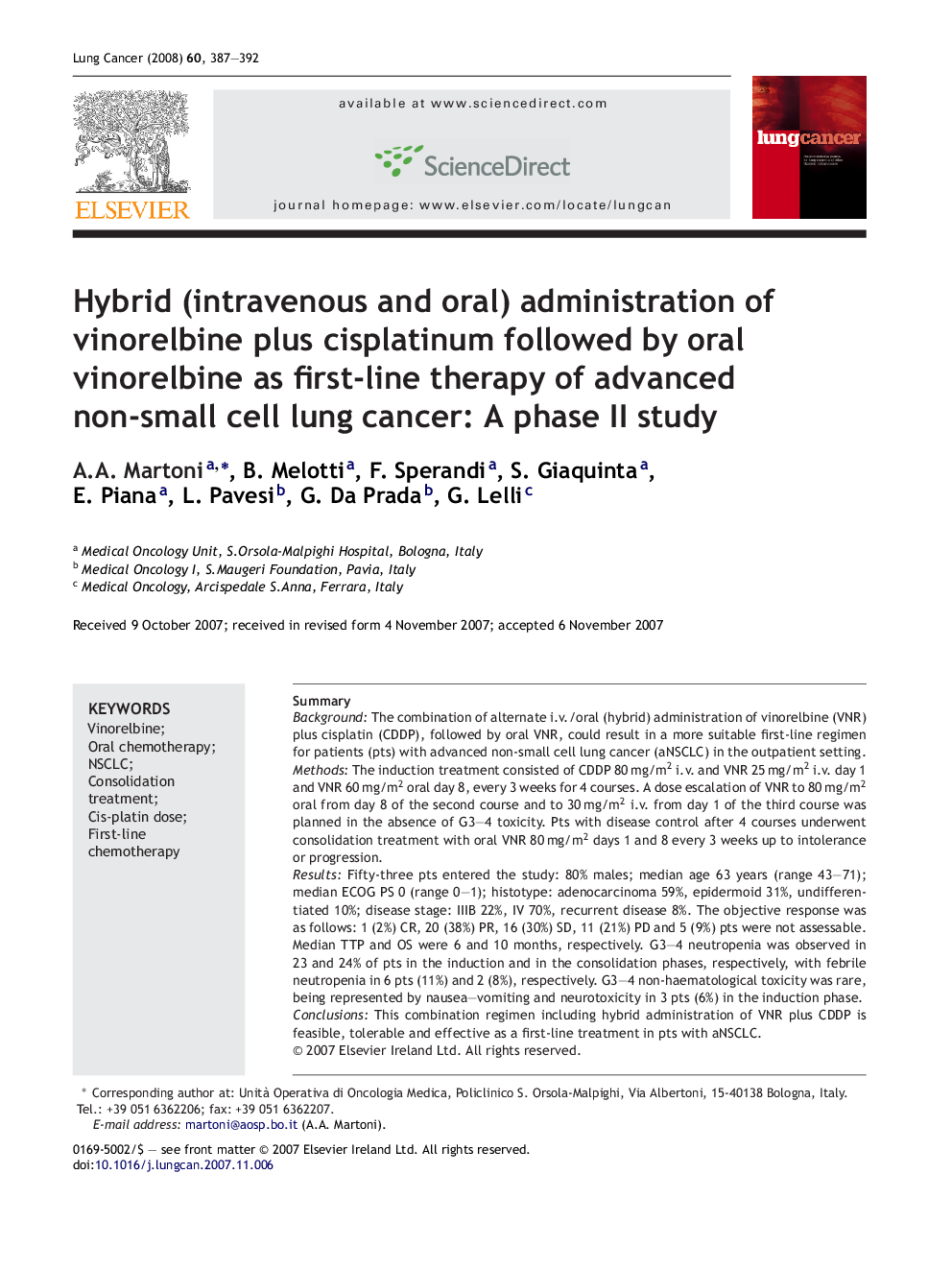| Article ID | Journal | Published Year | Pages | File Type |
|---|---|---|---|---|
| 2143266 | Lung Cancer | 2008 | 6 Pages |
SummaryBackgroundThe combination of alternate i.v./oral (hybrid) administration of vinorelbine (VNR) plus cisplatin (CDDP), followed by oral VNR, could result in a more suitable first-line regimen for patients (pts) with advanced non-small cell lung cancer (aNSCLC) in the outpatient setting.MethodsThe induction treatment consisted of CDDP 80 mg/m2 i.v. and VNR 25 mg/m2 i.v. day 1 and VNR 60 mg/m2 oral day 8, every 3 weeks for 4 courses. A dose escalation of VNR to 80 mg/m2 oral from day 8 of the second course and to 30 mg/m2 i.v. from day 1 of the third course was planned in the absence of G3–4 toxicity. Pts with disease control after 4 courses underwent consolidation treatment with oral VNR 80 mg/m2 days 1 and 8 every 3 weeks up to intolerance or progression.ResultsFifty-three pts entered the study: 80% males; median age 63 years (range 43–71); median ECOG PS 0 (range 0–1); histotype: adenocarcinoma 59%, epidermoid 31%, undifferentiated 10%; disease stage: IIIB 22%, IV 70%, recurrent disease 8%. The objective response was as follows: 1 (2%) CR, 20 (38%) PR, 16 (30%) SD, 11 (21%) PD and 5 (9%) pts were not assessable. Median TTP and OS were 6 and 10 months, respectively. G3–4 neutropenia was observed in 23 and 24% of pts in the induction and in the consolidation phases, respectively, with febrile neutropenia in 6 pts (11%) and 2 (8%), respectively. G3–4 non-haematological toxicity was rare, being represented by nausea–vomiting and neurotoxicity in 3 pts (6%) in the induction phase.ConclusionsThis combination regimen including hybrid administration of VNR plus CDDP is feasible, tolerable and effective as a first-line treatment in pts with aNSCLC.
